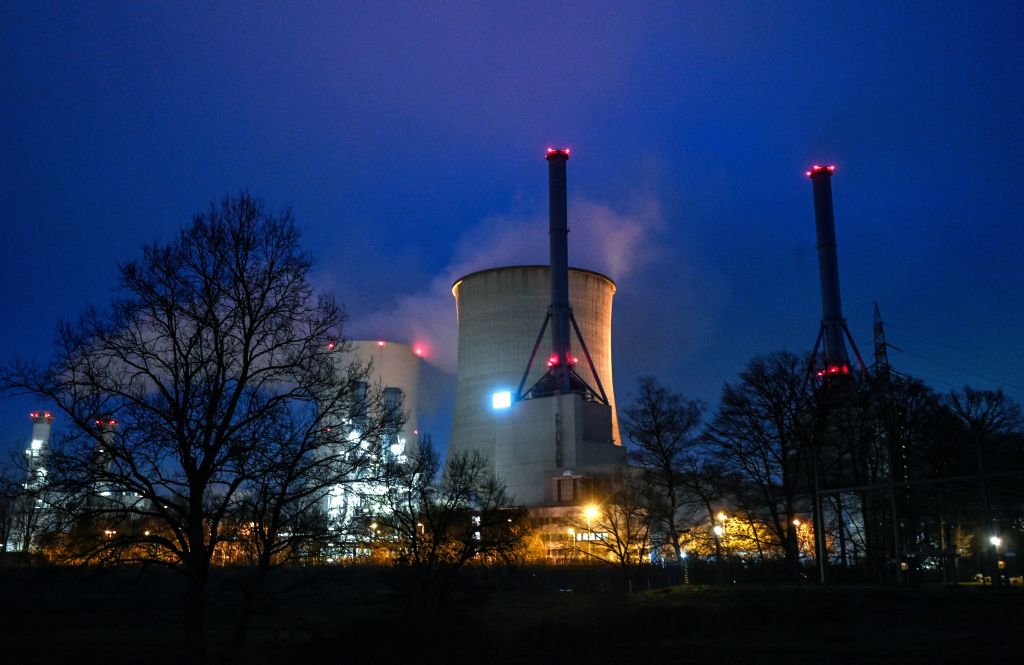Germany’s “halt” on the certification of the Nord Stream 2 pipeline on Tuesday is a classic case of too little, too late — a fact made all the more painfully clear in light of Russia’s invasion of Ukraine. Oil and gas still flow through Nord Stream 1 and many other Russian pipelines to Europe, and the continent has no choice but to keep importing the fossil fuels that finance Vladimir Putin’s offensive.
We all saw this coming. Europe’s supposed “green” energy transition disregarded energy security and common sense, and Ukraine is now paying the price. The world will never tackle climate change if it’s in a constant state of geopolitical energy insecurity, relying on authoritarian regimes like Russia and China to meet its basic needs.
Make no mistake about it — Europe’s dependence on Russia was a choice. When countries like Germany swiftly abandoned the generation of baseload sources of energy, such as natural gas and nuclear, in favor of renewable energy, they didn’t abandon fossil fuels; they just imported more from Russia. Domestic production of natural gas in Europe has nearly halved since 2010, while consumption has steadily increased in recent years.
At the same time, the United States took a different path. The Obama and Trump administrations recognized liquified natural gas as a necessary bridge for an effective energy transition and embraced the fracking boom. As a result, the United States became energy independent in 2019 for the first time since 1952. It’s no coincidence that we were entangled in numerous conflicts in the oil-rich Middle East during that sixty-seven-year period of dependence.
Our newfound prominence in the international LNG market also provided Europe with an alternate option that didn’t fatten the Kremlin’s pockets, but most of them said “no thanks.” The Trump administration aggressively urged these countries to buy more American gas to reduce their dependence on Russia, but Putin’s proven record of weaponizing energy supplies didn’t seem to worry European leaders.
One exception is Poland, which has entered into massive long-term contracts with American LNG producers since 2018 while building up its infrastructure to handle more imports. As a result, it has been able to decrease imports from Russia significantly while also re-selling some of that American gas to Ukraine, helping both countries break away from Russia’s stranglehold. On the other hand, Germany can’t even import the emergency LNG supplies currently sailing to Europe because it doesn’t have an LNG terminal capable of receiving them.
The widespread abandonment of nuclear power is another factor in Europe’s energy insecurity. Despite endless studies showing that nuclear is the safest, cleanest, and most reliable form of energy, most countries fell for anti-nuclear propaganda from powerful special interest groups like the Sierra Club and Greenpeace. Since the 1970s, these groups have waged war on nuclear energy, dismissing the facts to push their agendas.
Germany has been particularly susceptible to this narrative. After a tsunami caused Japan’s Fukushima plant to fail in 2011, the German government decided to shut down all of its nuclear plants. It immediately closed eight of its seventeen reactors that provided 25 percent of the country’s power, with the final three reactors set to close later this year.
Germany invested heavily in subsidizing renewable energy to make up for the energy shortfall, but wind and solar can’t be deployed fast enough to fill the nuclear gap, and also come with reliability concerns. As a result, Germany has been forced to rely on Russian fossil fuel imports. The country also has the highest electricity prices in Europe, and is unsurprisingly failing to meet its self-imposed climate goals.
If the rest of the world adopts Germany’s energy strategy, the result would be the quick expansion of authoritarian regimes and an inability to meet our climate goals. Ukraine and the rest of Europe are learning this lesson the hard way. Rarely has a crisis been so self-inflicted and needless. America’s energy independence has allowed for both substantial emissions reductions and geopolitical strength, while Europe is more vulnerable than it has been since the fall of the Soviet Union in 1991.
Perhaps Russia’s invasion of Ukraine was inevitable, but things will get much worse if our allies don’t learn their lesson. While it’s encouraging that Germany has canceled, at least temporarily, the Nord Stream 2 pipeline in order to reduce its reliance on Russia, a smart, climate-forward energy strategy requires much more decisive action.
Christopher Barnard is the national policy director for the American Conservation Coalition, a contributor to Young Voices, and a regular political commentator. Previous bylines include USA Today, the Washington Examiner, the Daily Telegraph, National Review and more.


















